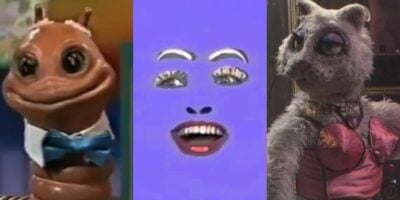Some 11 years ago, George took to the Forecourt of the Sydney Opera House and said goodbye.
The Brisbane-based outfit had been making music for almost a decade, providing the soundtrack for the romance and heartbreak of thousands of adolescents around the country, and reshaping Australian pop for years to come.
Yet it was never designed to be a permanent farewell, and the group’s five members always knew the day would come when they would dust off their melancholic yet wide-eyed choruses and take to the road once again.
The only thing that has surprised Tyrone Noonan, the band’s vocalist and guitarist, is how easy it has all been. “Everything has come together nicely,” Noonan says. “It’s been a very serendipitous project so far.”
Even though most members of the group have embarked upon successful solo careers since the split – with Tyrone’s sister Katie in particular carving out an impressive catalogue of well-received pop records in the interim – their reunion wasn’t a case of a whole lot of egos crashing into each other.
“I think everyone was on board when the idea was floated,” Noonan says. “I think we have all developed musically, which makes it lots of fun.”
George have made it clear that they have no interest in the past – they’re not taking to the stage in order to fiddle with the discography, or somehow change what has already been set down to record.
“We’re still trying to perform the songs as basically as possible. That was always our intention. I mean, when the idea was first floated I think we were worried about going up and sounding like some dated ’90s band. But I guess when we were writing the albums we always consciously tried never to follow any pop trends.
“We certainly had influences, but they were from a range of eras – lots of stuff that was around at the time, but a lot of earlier stuff as well. So I think that’s been a big help in doing this music again, ’cause it doesn’t sound dated.”
That said, even though George have managed to sidestep the thin veil of uncool that has descended upon many of the bands of their era, it would be a mistake to imply that Noonan and co. were deeply concerned with the group’s legacy when making a record like 2002’s Polyserena, or desperate to leave some decade-defying monument.
“Looking back in hindsight, I don’t think we realised how it would play out later on. We were just trying to knuckle down and create as much as possible. It was about creating our own sounds. I guess by trying to do that, maybe that’s what gives it the nature of being timeless. But I don’t think we consciously said, ‘We want this song to sound fresh in 20 years’ time,’ or anything like that.”
In that way, Noonan argues that George have accidentally managed to achieve what so few others have: they have delivered songs that still bop heads and move teens to this day. And as far as he’s concerned, he can thank a very special ingredient for such unplanned longevity.
“When writing the songs, they always started off on an acoustic guitar or a piano. Then later we would add [the] technical layer, the extra sound. That’s the icing. We had this guy who was like the sixth member of George in the studio; his name was Justin Tresidder. The product he was provided was called ‘orange glitter’,” Noonan laughs, remembering. “It was a beautiful extra sonic layer to add to everything, or a really beautiful sample or a loop that we used. That was the secret.”
George, supported byFelix Riebl and Jack Carty, play Twilight at Taronga,Taronga Zoo, on Friday February 17.


































